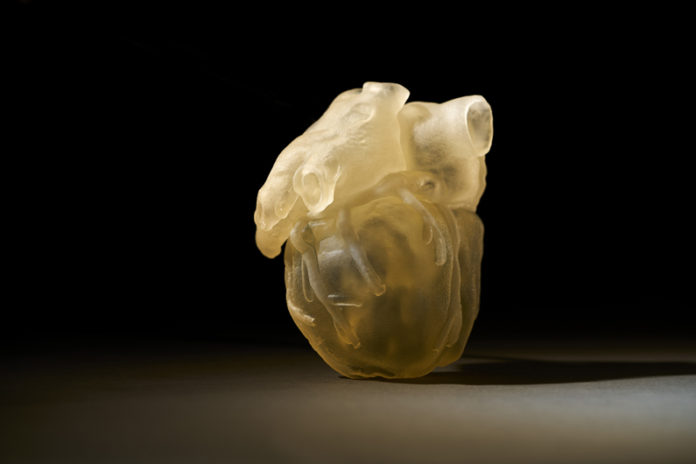Stratasys is investing extra miles in the medical industry. With the launch of the J750™ Digital Anatomy™ 3D Printer, the specialist of Polyjet & FDM technologies improves surgical preparation and training with realistic medical 3D Printed models.
Medical professionals now face a variety of options for preparation prior to the theatre room: cadavers, animal, traditional, or virtual reality models. Each of them has its own advantages and disadvantages.
Animal models for instance raise ethical concerns, not to mention that they are not a perfect representation of human anatomy. Cadaver models on the other hand, sometimes cannot retain live-tissue feel and require a controlled environment.
The Digital Anatomy 3D Printer enables the production of actual tissue response, it gives professionals the opportunity to focus on specific pathologies and does not require a specialized facility.
First tests of the new device include the one carried out by the Jacobs Institute, a Buffalo, N.Y.-based medical innovation center. The center focused on accelerating device development in vascular medicine and wanted to re-create key vascular components for advanced testing and training.
“3D printing has been wonderful for recreating patient-specific anatomy compared to cadavers or animal models; however, the final frontier for organ model realism has been live-tissue feel and biomechanical realism,” said Dr. Adnan Siddiqui, Chief Medical Officer, Jacobs Institute. “That’s exactly what the Digital Anatomy 3D Printer gives us. We believe these models give us the best opportunity to recreate human physiological conditions to simulate actual clinical situations and to study new devices to establish their effectiveness before introducing them to patients.”
As far as materials are concerned, the manufacturer announced that the J750™ Digital Anatomy™ 3D Printer can already process three new materials – TissueMatrix™, GelMatrix™, and BoneMatrix™ – convenient for cardiac, vascular, and orthopedic 3D printing applications. This equipment comes along with a Blood Vessel Cleaning Station that removes support material from inside 3D-printed blood vessels.
The new 3D Printer can be used by several types of users including medical device companies, academic medical centers, that desperately need to conduct training out of the theatre room, to minimize risk to patients. Lastly, the system also supports efforts to move from time-based surgical training to proficiency-based evaluation.
You can now post free of charge job opportunities in the AM Industry on 3D ADEPT Media.For further information about 3D Printing, follow us on our social networks and subscribe to our newsletter : Facebook, Twitter, LinkedIn & Instagram !Would you like to be featured in the next issue of our digital magazine? Send us an email at contact@3dadept.com






